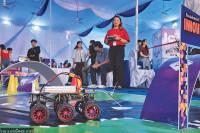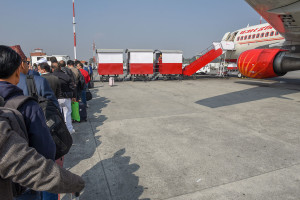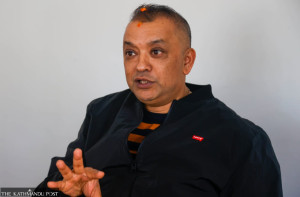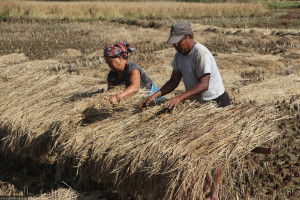Money
It’s autumn. Here are six destinations you can trek to
The trekking season has begun in Nepal. Spring and autumn are generally considered the best seasons to trek since the weather is pleasant and the skies clear.
The trekking season has begun in Nepal. Spring and autumn are generally considered the best seasons to trek since the weather is pleasant and the skies clear. Add to that the scenic landscapes and vibrant communities that the country’s hills and mountains feature in abundance. Here every trail winds through valleys where the mist clings to terraced fields, remote villages, deep gorges and waterfalls. Each trek unfolds like a story, and your footsteps sync with the pulse of the land.
Here are six trekking destinations around Nepal that make your journey an indelible experience.
Annapurna Base Camp (ABC)
Annapurna Base Camp, or ABC, is one of the most popular hikes in the world. The ABC trek starts from Pokhara at 822 metres altitude and ends at Annapurna Base Camp at 4,130 metres. The trek starts from Nayapul, a scenic two-hour drive from Pokhara. Nayapul is the gateway to the Annapurna region. Thereafter, one is recommended to walk for an average of 15 km in about 5-6 hours daily. The walk lasts seven days for slow trekkers and five days for those who can walk fast. The week-long trek would not require a prior trekking experience. The ABC hike does not have so much risk of potentially getting altitude sickness and is affordable compared to other treks. The hike’s main draws include Gangapurna (7,455 metres), Machapuchhare (6,993 meters), Himalchuli (7,893 meters), Annapurna I (8,091 metres), Annapurna III (7,555 metres) and Dhaulagiri (8,167 metres). Featuring exotic mountains and picturesque landscapes, this trek promises to be one that you will remember for a long time after the trekking is completed.
Manaslu Circuit
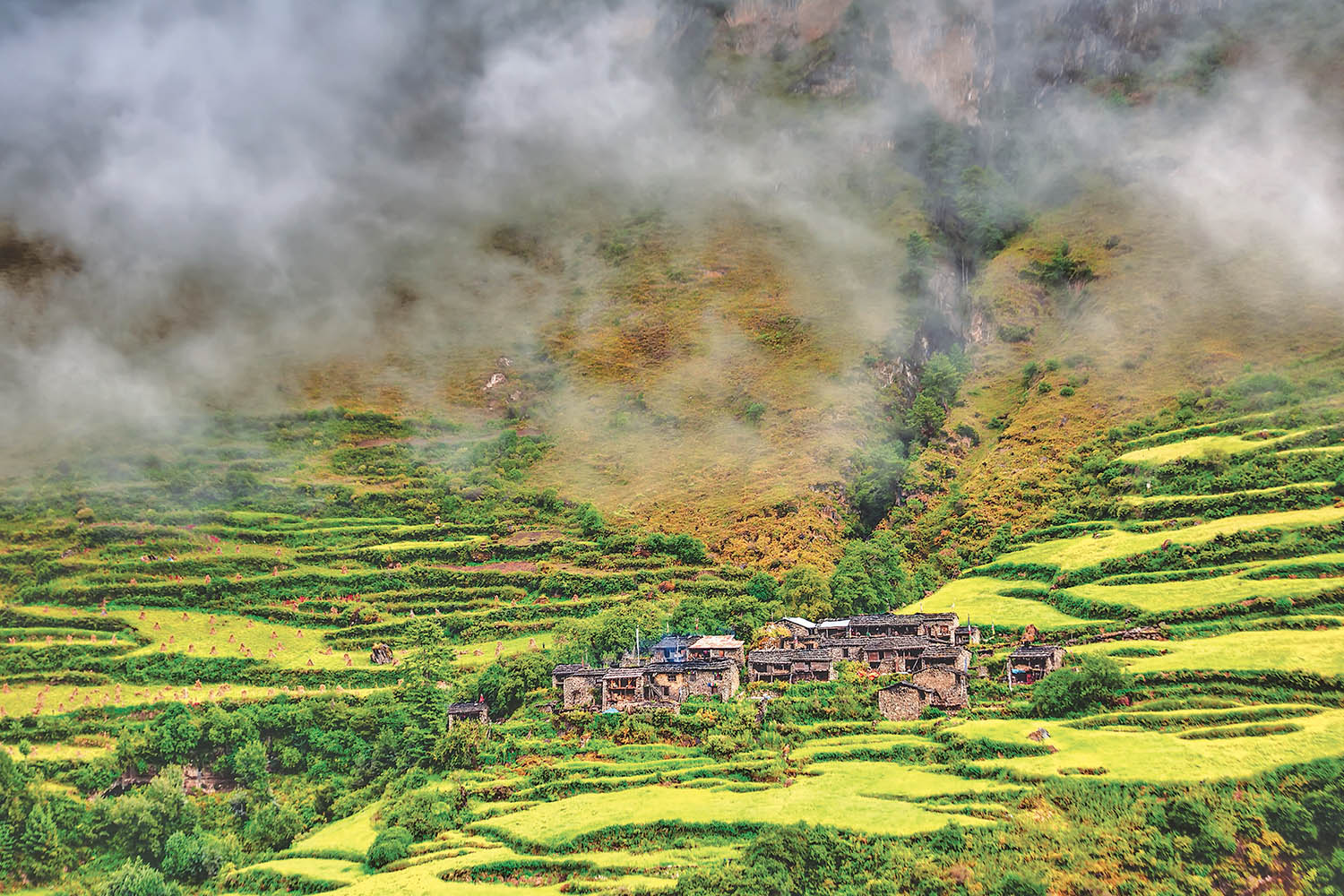
The Manaslu Circuit trek has gained traction in recent years. Nestled in the heart of Gorkha, it provides a breathtaking panoramic view of Mt Manaslu, the eighth-highest mountain in the world at 8,163 metres above sea level. This less-trodden trail gives you an unspoiled and tranquil experience. It’s an adventurous trek along the Nepal-Tibet border that takes you to an elevation of 5,215 metres at the Larkya La pass. The pass offers stunning views of peaks like Kanguru, Himlung, and Annapurna II. It’s the closest trek from Kathmandu which passes through Budi Gandaki and traverses picturesque villages like Deng, Ghap, Lho and Samagaon. After a day of acclimatisation at Samagaon, the trek ascends to higher elevations crossing Samdo and Dharamsala as the trail meanders through a desert-like landscape with a captivating backdrop and reach Larkya La pass, the highest point of the trek. The Manaslu trekking is appealing due to its controlled tourism. The Manaslu region is restricted due to its proximity to Tibet and the presence of rare animals like snow leopards. A special permit is required for foreigners.
Tsum Valley

Tsum Valley trek takes visitors to the hidden valley of Tsum, home to the direct descendant Tibetan people known as Tsumbas. The Tsum Valley is located to the east of Manaslu, on the border with Tibet. It was opened to trekkers in 2008. It remains relatively untouched, with ancient villages and Tibetan Buddhist monasteries. Each day, you have to walk between 6 and 7 hours, with the high point of the trek being 4,000 metres above the largest of the monasteries in the valley, Mu Gompa. The trail to the sacred pilgrimage site of Tsum Valley heads to the upper Budhi Gandaki River Valley through unexplored Tibetan communities. The valley is rich in culture and tradition. Tsum Valley trekking permit is cheaper compared to other trekking routes in the restricted areas. For foreigners, a permit costs $40 per person for the first 8 days.
Upper Mustang

Mustang is a high-altitude desert of multi-hued gorges, green oases, fairy-tale gompas, prayer flags, and blood-red fortified monasteries. It was long shrouded in mystery and closed to outsiders until 1992. This land is rich in traditional Tibetan Buddhist culture. The standard 10-day trek is straight up and down from Kagbeni to Lo Manthang. The standard route takes you up the western side of the Kali Gandaki river. It takes four days to walk from Kagbeni to Lo Manthang, and the same time to return. Upper Mustang is a restricted area, and the government charges foreigners $500 per person for ten days. Additional days after day ten are charged at $50 per day. Upper Mustang is totally within the Himalayan rain shadow, which means that, unlike most other parts of the country, the best time to trek is May to October.
Dudh Pokhari

Very few trekkers know about the Dudhkunda or Dudh Pokhari trekking trail in the Everest region. The altitude of Dhudhkunda is 4,560 metres above sea level. Many Hindu devotees visit this lake during August on the Janai Purnima festival. Dudh Kunda is the newly opened trekking trail for foreigners in Nepal and it is rich in nature and culture. The Dudh Kunda Khaling trek starts either by flight to Phaplu or drive from Kathmandu. You can drive directly to Salleri (2,390 metres) via the BP highway through Okhaldhunga. You will trek through the most amazing villages and landscapes such as Takshindu, Beni and Dudh Kunda. It’s a two-week-long route.
Kanchenjunga Circuit

The Kanchenjunga Circuit trek allows you to observe the eponymous third-highest mountain in the world, at 8,586 metres. It is a remote trek requiring good fitness and experience. Kanchenjunga lies on the far eastern side of Nepal, near the border with the Indian state Sikkim. Until mid-1800, it was thought Kanchenjunga was the highest peak in the world. This area was closed to trekkers until mid-1980. Today, it is protected by the Kanchenjunga Conservation Area, and a special trekking permit is required. The return trek to Kanchenjunga base camp takes about 20 days. If luck is in your favour, you may encounter rare wildlife like Himalayan black bears, musk deer, snow leopards, and red pandas, among others. Likewise, trekkers can also spot many endangered species of birds along the way.




 17.12°C Kathmandu
17.12°C Kathmandu